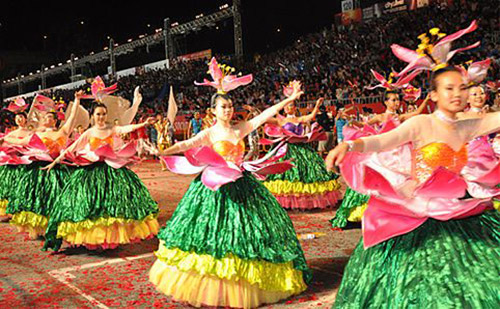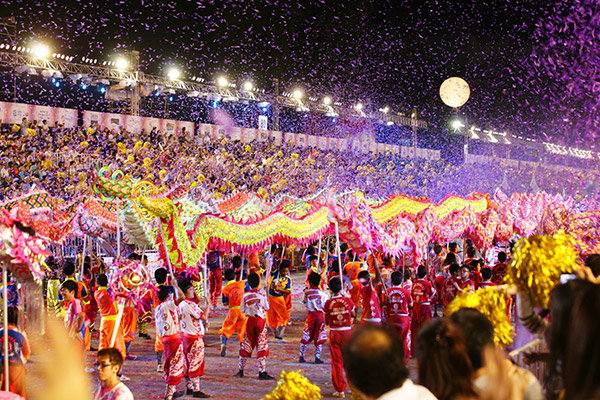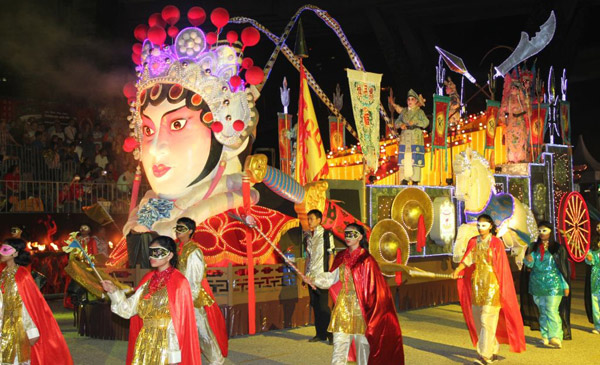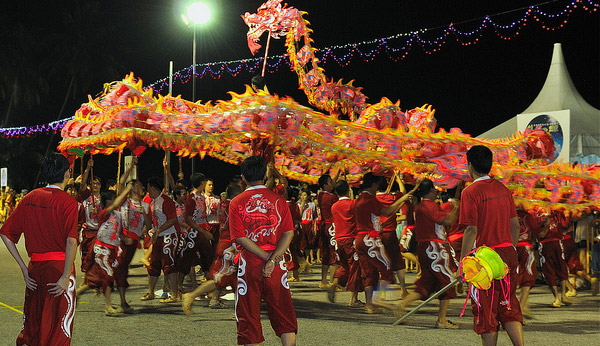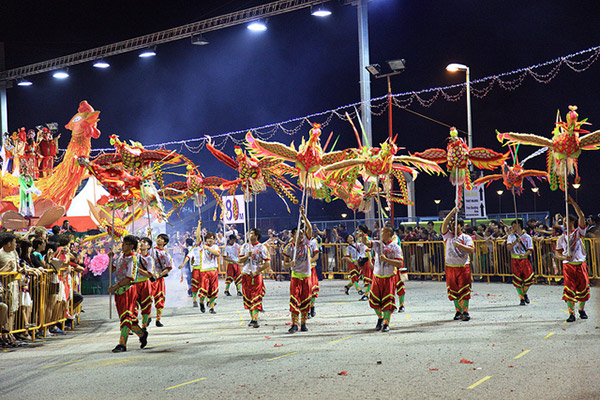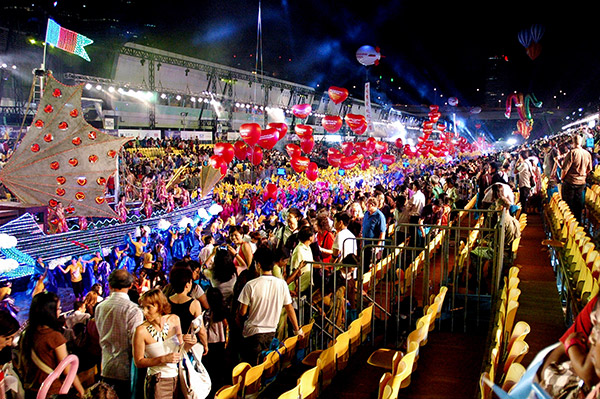| About Singapore |
| Tour Packages |
| What to do |
| What to see |
| Where to Stay |
| Events |
| Contact us |
Chingay Parade Singapore
A Joyous Celebration
The Chingay Parade is a traditional Chinese New Year procession that has grown in recent years to become a massive street parade, boasting a stunning array of dancers, street floats, jugglers, percussionists, lion and dragon dancers, clowns and acrobats, among others.
The parade has its origins in China, where processions of a similar ilk were held for two weeks after the Lunar New Year to welcome the season of spring. The name "Chingay" was coined from its Hokkien dialect equivalent, meaning "the art of costume and masquerade", and is a longstanding tradition dating back to 1973, when the first parade was organised.
In the 1990s, the parade became an evening-to-night event, complete with an impressive display of lights and other pyrotechnics. People from all walks of life participate in the Chingay, as long as they have something to celebrate and share. Over the years, the route for the parade has covered most of the central areas of Singapore like Outram Park, Orchard Road, Chinatown and City Hall.
During Chinese New Year, head down to the Formula One Pit Building at the Marina Waterfront for the Chingay Parade. Recently moved from Orchard Road to this stadium-like venue to accommodate more spectators, you'll get your fill of international and local acts on mobile floats to other varied forms of street gaiety.
Join in as Singaporeans and visitors alike party up and down the streets during the festival as a symbolic gesture of their anticipation of the Spring bloom. Various lion and dragon dances are also held during this time - with acts such as Singapore's People's Association Firecracker Dragons Dance, a magnificent and awe-inspiring combination of dance and pyrotechnic acts, where valiant performers weave through acrobatically under bright red burning sparklers.
In recent years, the festival has evolved with Asian and global influences, with approximately 2,000 performers from various clubs, schools and institutions gyrating to Samba music - and has given the parade a growing reputation as the Mardi Gras of the East - in a myriad of glittering, colourful costumes. Since 2000, exotic groups from various countries like Ghana, Brazil and Slovenia have also made their debut in the parade, enthralling tourists and Singaporeans, reflecting a true cosmopolitan society.



